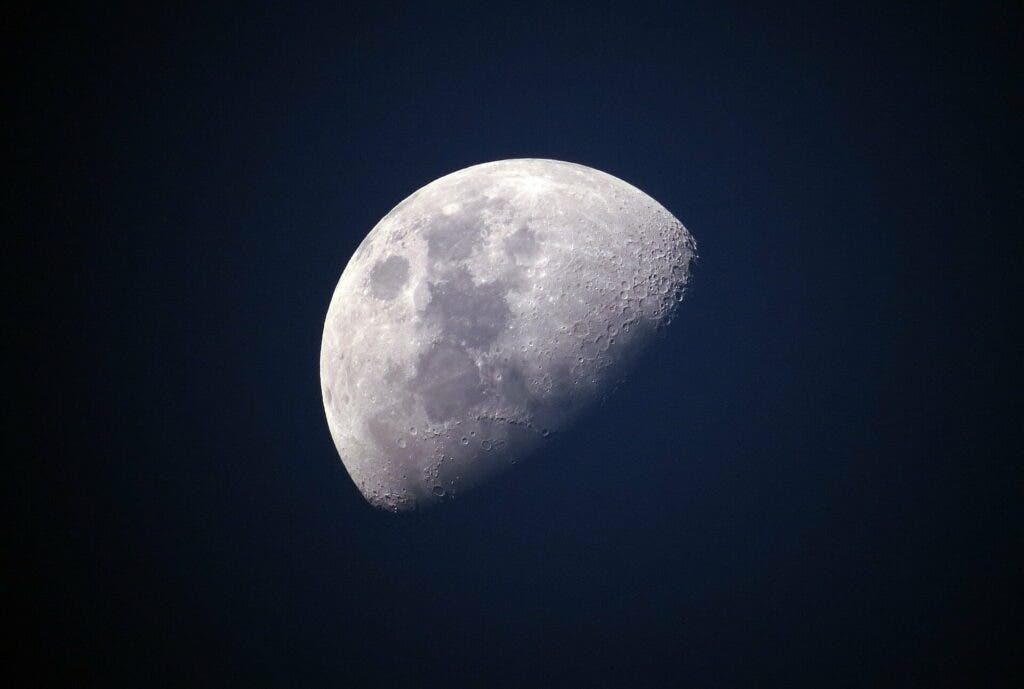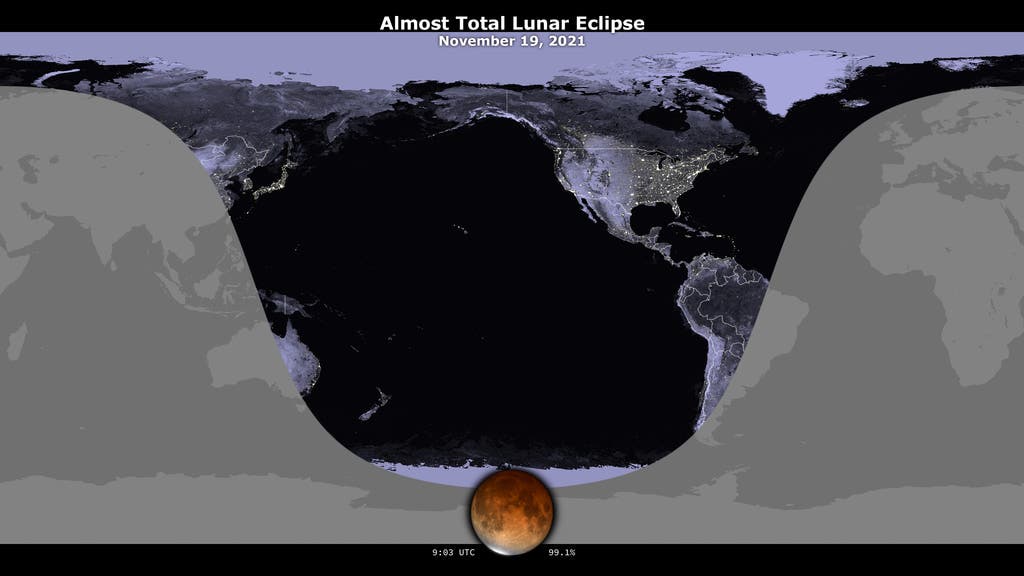An almost total lunar eclipse is expected overnight this Thursday, November 18th, to Friday, November 19th. It will last almost three hours and 30 minutes, making it the longest in centuries. About 97% of the moon will vanish into Earth’s shadow – visible in many parts of the world, including North and South America and eastern Australia.

Lunar eclipses happen when the Earth, the Moon, and the Sun align so that the Moon passes into Earth’s shadow. There are three types – total, partial and penumbral. In a total eclipse, which is the most dramatic, Earth’s shadow, called the umbra, covers up to 99.1% of the Moon’s disk. We’ll be very close to seeing that this night.
During the eclipse, the moon should have a reddish-brown color as it slips into the shadow, a phenomenon called Rayleigh scattering — the same mechanism which makes sunsets look red and the sky look blue. The Moon’s level of red will depend on the dust or clouds in the atmosphere of Earth during the eclipse.
“Partial lunar eclipses might not be quite as spectacular as total lunar eclipses — where the moon is completely covered in Earth’s shadow – but they occur more frequently,” NASA said in a skywatching update. “And that just means more opportunities to witness little changes in our solar system that sometimes occur right before our eyes.”
A remarkable experience
The eclipse will be visible in several parts of the world across the evening of Thursday and into early Friday. The exact time will depend on each location, with a few websites around in which you can get your exact times. But it will likely be a long night. For example, in New Mexico, it will start at 12.18am and reach its maximum at 2.02am.

In case you don’t want to stay up late or watch the eclipse in person, there are also online options. The Virtual Telescope Project (VTP) is doing a special broadcast of the eclipse starting at 11 pm PT on Thursday. VTP also partnered up with astronomers from around the world and will offer a live commentary from astrophysicist Gianluca Masi.
The last time a lunar eclipse took place was on May 26, 2021, named the “super flower blood moon.” It was a total eclipse, the first one since 2019, and it was visible in its entirety over Oceania and the Pacific Ocean. Those in southern and eastern Asia could see it at moonrise, while those in North and South western America saw it at moonset.
Eclipses have caused inspiration but also fear across history, especially when the moon turns blood-red, as earlier in May this year. They don’t happen a lot and aren’t always visible. But they are a remarkable experience worth watching, allowing us to admire how the Sun, the Earth and the Moon are all connected as part of the solar system.


